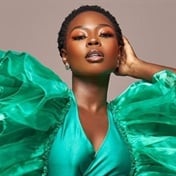
I never developed a deep connection with my childhood dolls. After the novelty of playing with a doll like Barbie or Petra had worn off – after the hair had hardened from too much combing or from washing her in the bath – my sister and I would usually snap their heads off, cut their hair, and chew their toes and fingers while watching TV as a form of innocent childhood rebellion.
That they were white dolls never crossed our minds. All the dolls we knew were white, and they all wore high heels, had long, bendy legs and permanent Chiclet smiles.
The only black doll we knew was at our cousins’ house and it was a perpetually naked, dark-brown baby doll named Gundwana who had a missing eye and a battered body because she’d been dropped a lot. My sister and I were scared of her and never wanted to play with her.
Compared with the healthy conditions of the white dolls in the house, Gundwana’s fate wasn’t divorced from the fact that she was brown-skinned.
Our little minds knew to fear, dislike and distrust her because representation of blackness by the world’s image makers was one of the most powerful tools of propaganda used to invent meanings about black bodies, even little innocent ones like Gundwana’s.
The misrepresentation of black bodies, not only during my childhood but, to some extent, today is one of the things that might have induced me, a 30-year-old woman, to squeal in delirium and leap out of bed with giddy eagerness after hearing the news that a package containing three black dolls was on its way to me this week.
The scarcity syndrome rendered me embarrassingly thirsty in front of the maker of Ntomb’enhle Dolls, Molemo Kgomo, when she delivered them to my apartment on Tuesday, less than 24 hours after I had ordered them online.
When I showed my friend – who is in her late thirties – the Sotho doll that was standing between the Xhosa and Ndebele dolls, she said: “It’s us.” We assigned African names to each doll and laughed as if we were seeing ourselves in the mirror for the first time.
This novelty won’t wear off in the age of the internet, which is today’s most powerful medium of the ‘re’ in representation.
I’m in awe of these dolls not only because I’ve grown to love and appreciate the meaning of dark-brown skin and upright hair, not only because I love my mixed Mfengu and Xhosa heritage, not only because they exist in the time of Melanin Monday and A Tribe Called Curl. I’m in awe of the fact that they exist at all, within the reach of my awareness and in my real life.
Get your own Ntomb’enhle Doll online for R260 at ntombenhledolls.co.za




 Publications
Publications
 Partners
Partners








